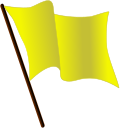A request that this article title be changed to Liberalism in Romania is under discussion . Please do not move this article until the discussion is closed. |
This article has multiple issues. Please help improve it or discuss these issues on the talk page . (Learn how and when to remove these messages)
|
| Part of a series on |
| Liberalism |
|---|
 |
| Part of a series on |
| Radicalism |
|---|
Liberalism and radicalism are important political movements in Romania. Many political parties from these traditions have had important historical roles and substantial support, including representation in the Parliament of Romania. Not all Romanian political parties relevant to this tradition have explicitly described themselves as liberal or radical.
Contents
- Background
- Timeline of parties and movements
- Precursors
- National Liberal Party (PNL)
- National Liberal Party-Brătianu (PNL-B)
- National Liberal Party–Tătărescu (PNL-T)
- From National Liberal Party Youth Wing (PNL-AT) to Liberal Party 1993 (PL '93)
- Civic Alliance Party (PAC)
- National Liberal Party-Democratic Convention (PNL-CD)
- National Liberal Party-Câmpeanu (PNL-C)
- Alliance for Romania (ApR)
- Democratic Liberal Party (PDL)
- Alliance of Liberals and Democrats (ALDE)
- Force of the Right (FD)
- Presidents of the National Liberal Party (1875–present)
- See also
- References
- External links